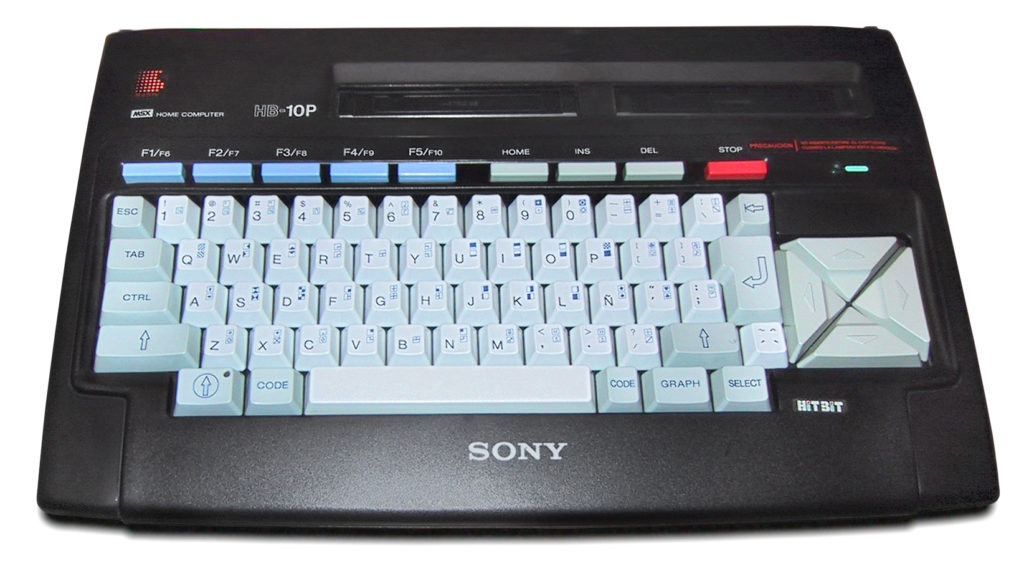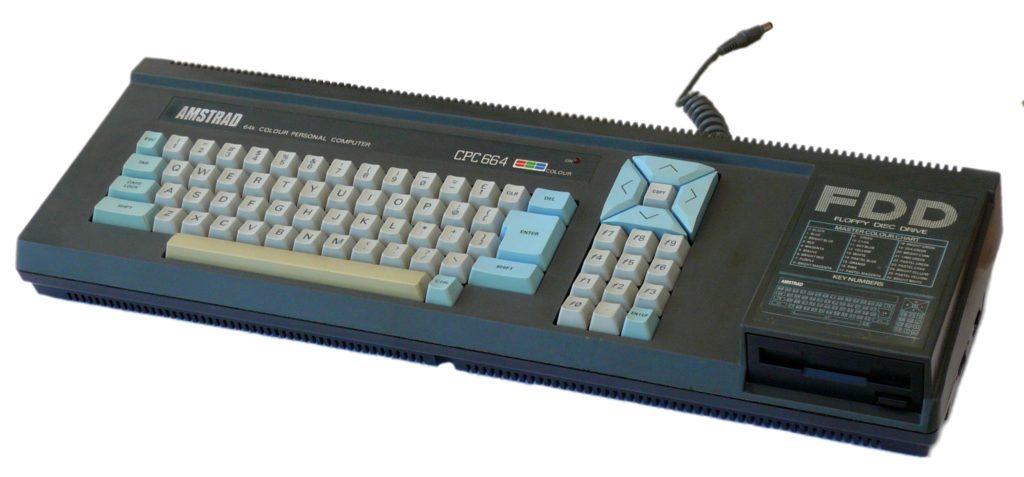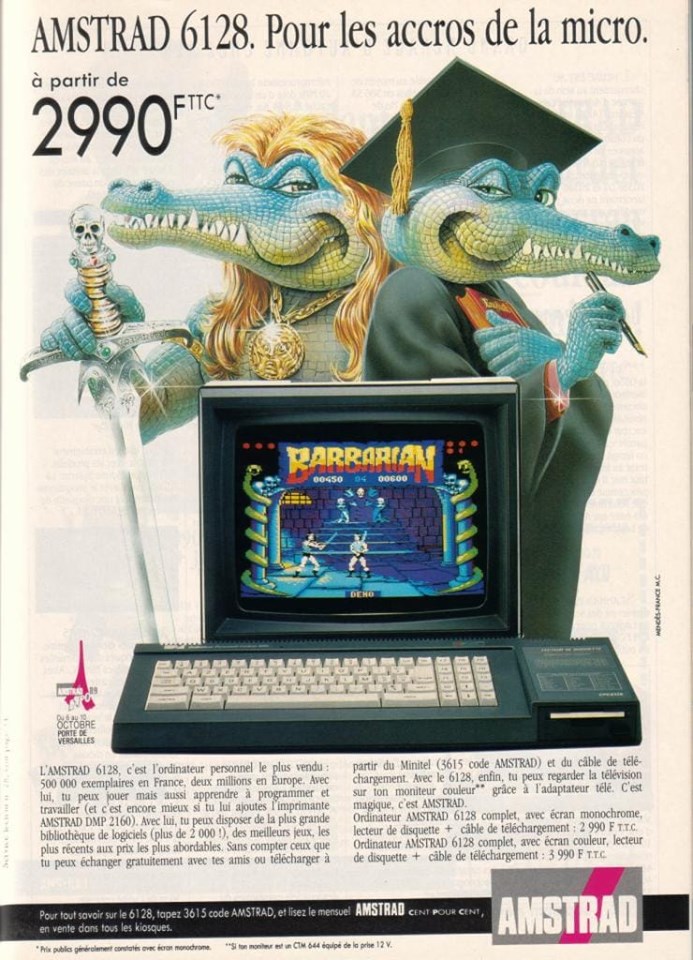Computers come and go, it’s a fact of life. Back in the mid-1980s, the bubble was bursting on the microcomputer boom; leaving many companies facing bankruptcy before their beloved machines could even reach the high street. Amstrad was a rare survivor of the 8-bit home computer scene but that didn’t mean it was entirely without a machine that sadly ended its run sooner than expected.
That machine was the Amstrad CPC 664, the sister computer to the mighty CPC 464. Why did it only last for six months on store shelves? Today we are going to look into that, and find out.
Creation of the CPC 664
Amstrad had seen remarkable success for the CPC 464 computer, which quickly entered the top five machines by sales figures in a market that was oversaturated even before they arrived. The computer was an excellent all-rounder that catered to home use and also small businesses but it had one major drawback that users and critics of the day both honed in on: the cassette loading system was too slow.
Amstrad’s solution was simple: bundle their new FD-1 disk drive add-on for the CPC 464 into the machine itself, and sell that as an alternate system. Thus, the CPC 664 project was born.
Now it would have been entirely possible to simply re-design the case of the CPC 464 to allow a disk drive to be put in place of the cassette recorder but Amstrad didn’t just do that and call it a day. They approached this new machine like it was a chance to remedy a few issues with their existing computer. The main alteration, if we put the disk drive aside for the moment, was to update the ROM chip storing the CPC’s BASIC, and to implement an updated AMSDOS (the AMstrad Disk Operating System) directly into the computer.
BASIC 1.1 added extra functions to the CPC’s already extensive BASIC. Now the CPC could bucket fill areas of the screen using a FILL command, amongst other additions. Bugs that had been found in the 464’s ROM over the year it had been on sale were all fixed; and AMSDOS was tweaked to make it easier to use; with the erase command going from the CPC 464’s cumbersome a$=”filename.bas”:|ERA,a$ to the CPC 664’s very simple |ERA,”filename.bas”. We can only speculate how many fingertips were saved from unnecessary typing over that one change alone.
The majority of the BASIC remained the same, as did much of the ROM itself; which rendered the CPC 664 backward compatible with the CPC 464 while the 464 was almost entirely compatible with the 664 (software written using the additional BASIC 1.1 commands wouldn’t run on a 464).
The internals weren’t the only changes, of course. The CPC 464 had beaten the MSX computers from Japan to the market but the CPC 664 would be launching after the MSX standard had made its way to European shores. These new machines looked fancy and high-tech, with chunky arrow keys and disk drives that advertised their presence thanks to “FDD” (“Floppy Disk Drive”) being emblazoned on them. Amstrad wasn’t going to take that sitting down, they would play the newcomers at their own game!

The MSX. Main feature? Ridiculous-looking arrow keys. 
The CPC 664. Main feature? Ridiculous-looking arrow keys.
So the CPC 664’s keyboard was remodelled. While the layout is very much the same as you will find on the earlier CPC 464, the cursor keys were made much larger. The disk drive has “FDD” written on it in huge letters, plus all the colour and keyboard codes for CPC BASIC are listed on there as well. Finally, the coloured keys from the CPC 464 are all re-coloured to a lovely sky blue; giving the CPC 664 an efficient yet eye-catching look to it. It’s the high tech machine that looks the part in the home or the office!
The thing is, it wasn’t the big leap forward Amstrad would have liked you to think it was. It wasn’t even the only computer Amstrad had been working on.
Breaking Into America
Amstrad had been in close partnership with Indescomp since before the launch of the CPC 464. Indescomp were the Amstrad distributor for Spain and Indescomp Chicago were trying to make headway into the North American market; which preferred its own crop of home computers to the European machines that were trying to make in-roads.

Timex had a hard time selling Sinclair’s ZX Spectrum despite its redesign for the US market and Indescomp knew that if they were going to have a chance at success, they needed a machine that specifically catered to American needs. That meant a disk drive and a lot more memory, which the CPC 664 just didn’t provide. Also, all those colours on the case had to go – the Americans wanted a machine that looked like it was all grown up, not something that could be mistaken for a toy.
So Amstrad designed the CPC 6128. It had all the ROM upgrades of the CPC 664. It had the built-in disk drive from the CPC 664. It had a redesigned keyboard that looked as if it would be right at home in even the sternest of high-flying offices; and most important of all, it had double the memory. It was the all-singing, all-dancing machine to open up the US to Amstrad.
It failed to break into the American market.
The Short Shelf Life
Left with a glut of machines that wouldn’t sell and the threat of Commodore’s C128 coming to take Amstrad’s small business market share, Lord Sugar’s company did the only thing they could in the grand scheme of things: they brought the CPC 6128 to Europe and started selling it there. The problem was, Amstrad knew they didn’t have room in the market for three CPC machines, especially when the 464 and 664 were so similar. One of them had to go.
The CPC 464 was settled in as a major player in the home computer market by late 1985. Amstrad were selling cassettes for the machine left, right and centre – and so were the third party developers who were starting to produce games and other software for the machine. There was no way the 464 could be taken out of the market, it had found its feet and the cheapness of cassettes made the 464 the perfect starter machine.
Meanwhile, the CPC 664 had only been on the market for a few months, so it didn’t have the brand recognition of the older computer. Its disk-based software would run on the new CPC 6128 and anyone who had a CPC 464 with the FD-1 add-on drive could run it all as well. It had no unique features that the CPC 6128 couldn’t outdo so, naturally, it was the contender for the chop.
You could say the CPC 664 is the forgotten middle child of the CPC range; or the machine that was basically there to fill a gap while a better machine was in development but when it launched, it was meant to be the next machine in the line. It was built to beat the MSX and to be the obvious choice for someone who wanted a CPC but also wanted the speed of disks. In that respect, it did its job and it did it well.
Was Amstrad right to drop the machine so soon? To be honest, yes. It really didn’t have any choice once the move into America didn’t pan out. If it hadn’t replaced the 664 with the 6128, Amstrad could easily have seen their business markets hurt badly by Commodore’s CP/M compatible 128k machine. It’s a shame that the lovely design of the 664 became so rare, especially since it was replaced by such a drab machine, but in purely economic terms the writing was on the wall.
Thanks to its short shelf life and consequently low production runs, the Amstrad CPC 664 is now quite the collector’s item. If you find one out in the wild, it’s likely to be worth your time picking it up.

This is the first time I’ve heard of this explanation of the story! I bought an Amstrad CPC664 after several months of research on which computer to buy to replace my crappy Commodore 64. I got the C64 because it was on my shortlist of computers to consider buying to compose music on, which all had 3 or 4 channel synthesiser chips instead of tone generators or beepers. After months of studying books and magazines, I found out it had no commands for colour, graphics or sound! I was determined not to get caught out again, so I researched all the computers on the market. I chose the Amstrad CPC464, but then found out there would soon be a new Amstrad CPC model, so I waited for it to be released. I chose it for the 3 channel synthesiser chip, the same video chip as the BBC Micro, but condensed to only three display modes with the same individual pixel clarity (no colour bleed or attribute mode), the 27 colour palette, advanced built in Locomotive BASIC language with about 160 commands, as well as the built in disk drive and complete with colour monitor for £450. I felt really proud to own a computer which I thought had the best features from all other 8 bit computers, and was also a small business machine with the CP/M 2.2 operating system that came with it. It was also the latest and most advanced computer by Amstrad. I was really depressed to hear after this that a 128K CPC computer was going to be released, then even more upset to hear that it had suddenly been released without even an announcement only about four months after I bought my lovely CPC664! It made me feel even worse that the CPC6128 cost £50 less than the CPC664 and that my wonderful computer would be discontinued. I think Alan Sugar/Amstrad should have continued to make and sell the CPC664. I don’t understand the sentence that the market couldn’t support three CPC computer models. I think they could have reduced the price of the CPC664 to somewhere between the CPC464 and the CPC6128, as well as offering ROM, RAM, and CP/M Plus upgrades to CPC664 owners. Why not offer upgrades to CPC464 owners as well? After this, I felt demoralised and ashamed. I think Alan Sugar lied in an interview with Jane Danson on https://www.youtube.com/watch?v=uXRLA5gjxOo at 15:20 in, saying that the CPC664 would run all the same software as the CPC6128, because obviously some software would require 128K and/or CP/M Plus. Not that long afterwards, lots of software requiring CP/M Plus started to be released, aimed at the CPC6128 and the PCW8256. The technical specification of the CPC664 hadn’t changed, but its status had. Me and my family couldn’t afford to just sell the CPC664 and buy a CPC6128. I eventually bought a DK’tronics 64K upgrade and got a pirate copy of CP/M Plus from a CPC6128 owner. I was in this situation for another 3 years 3 months until I bought an Amiga A500!